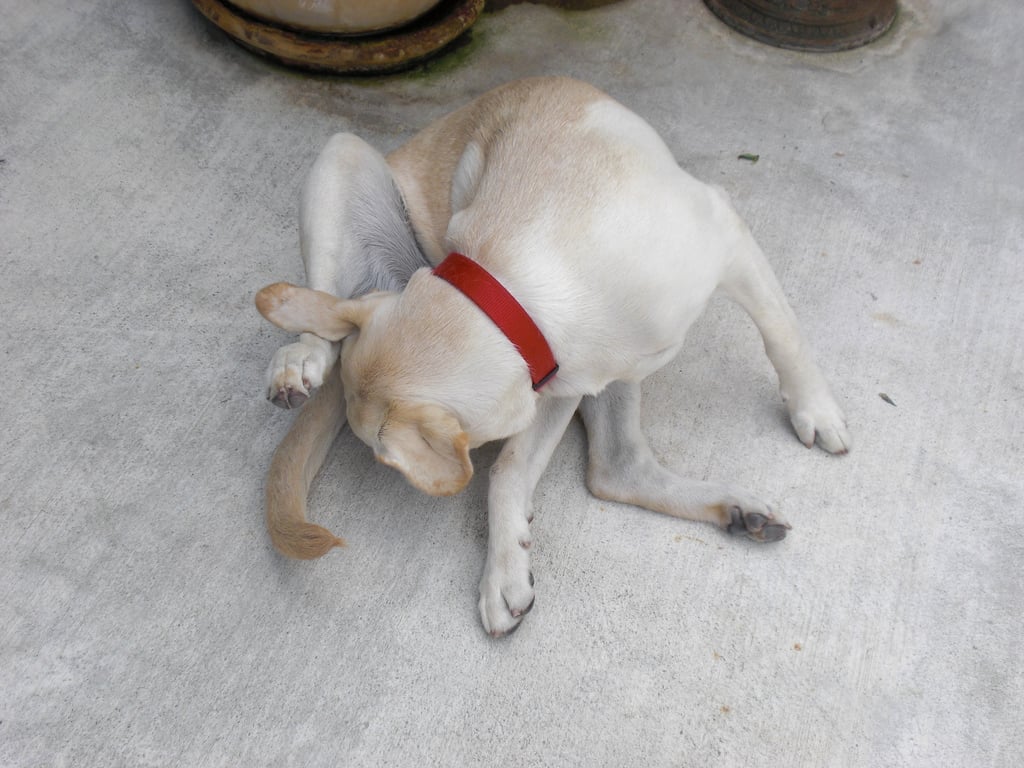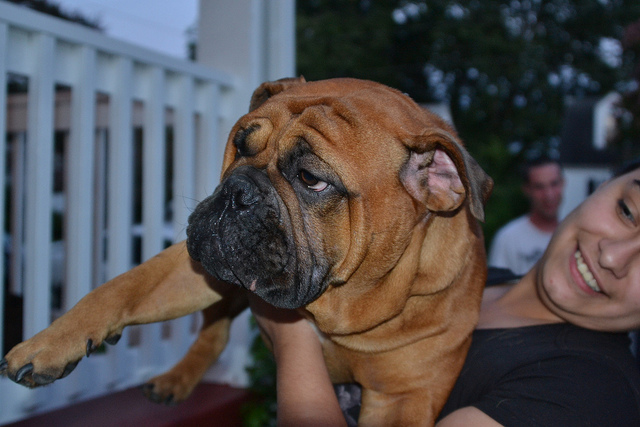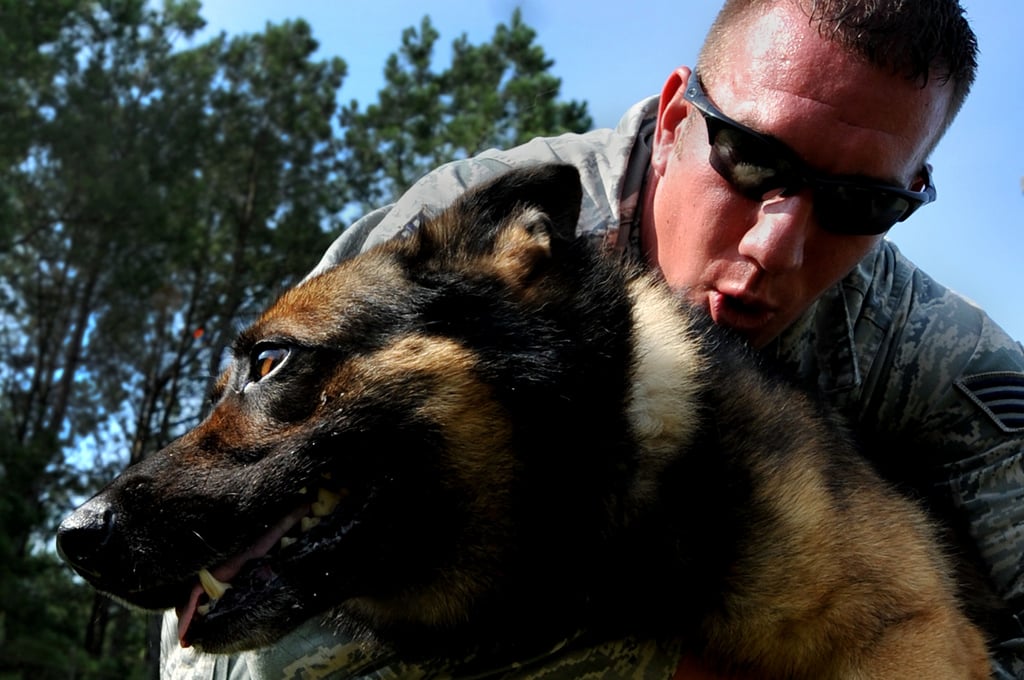Maybe you’ve noticed behaviour changes in your dog lately. Perhaps they’re acting out, or seem unusually tense, clingy, or distant. Do they need a spa day? Yoga retreat? It turns out that dogs can get stressed out just like pet parents do. To help you recognize when your pet needs a break, we’ve pulled together the common signs of stress in dogs, along with some causes and tips to help.
The Eyes Have It
A dog’s eyelids peeled back to show white probably means stress. You may see a crescent shape of white as they look side-to-side, which dogonesafe.com calls the “half-moon eye.” Of course, that doesn’t mean red eyes are better. Like humans, that often means they’re in need of rest.
Ears: Laid Back Doesn’t Mean Laid Back
Dog ears differ, but stress makes them react one of two ways. Some canine ears become more erect if they’re uneasy, but many pull back or lay flat, becoming almost “pinned back,” as one article suggests. Pet parents should learn the usual positions of their dog’s ears. This will let you know when they shift into a position that indicates stress.
Mind the Gap
Are their lips curled back? More teeth or gums than usual? It’s vital to notice that curl before it becomes a snarl, the snarl before a snap, and a snap before a bite. Vetstreet notes that in response to stress, even whiskers can stand up more pointedly.
Stress Sounds Like This
In this case, the bark isn’t worse than the bite…but it could mean stress. Dogs may have other aggression issues, but don’t discount stress as one of the causes of excess vocalization. It may be less than barking: growling, whining, whimpering or simply excessive panting are common indicators of an anxious pooch.
Edible Signs and Crappy Signs
No joke, one indicator of dog anxiety is their food intake and how fast (or slow) it comes out the other end. As PetMD points out, a decrease in appetite might be due to stress. Also, gastrointestinal issues like diarrhoea and constipation can be caused by anxiety.
…and About That <ahem> Particular Licking
Trainer Jolanta Benal relates a common scenario where dog walkers stop to talk. As they speak and stare at one of the dogs, the object of their attention decides it’s time to clean the privates. Turns out that “prolonged gazing can elicit anxiety in dogs.” They didn’t just pick that moment to embarrass you! It’s their stress reaction.
A Tail to Tell
Before we reach the end of our signs, we need to reach the end of the dog. A tail can abandon its normative position and take poses that indicate stress. A tail between the legs is common, but it may also be straight down, or simply wagging at the tip.
Full-Bodied Problems
The reality is, a dog’s entire body language comes into play when beset by stress. Other factors to take into account are:
- Unnecessary shaking or shivering
- Abnormal shedding
- Tense muscles
- Excessive drooling
- Itching and scratching
- Licking lips and nose
- Yawning
For an exhaustive list, check out Service Dog Central for a signs-of-stress checklist.
PTSDD… Post Traumatic Stress Dog Disorder?
If you adopted a dog with a known traumatic past, more intervention might be required. For military dogs, for example, canine PTSD can be a real issue. Other events like natural disasters or car accidents may have similar effects. As Cesar’s Way notes, in these cases a veterinarian specialist will probably be required.
Okay, But Why is My Dog Stressed?
Some causes are obvious, like a whole group of excited children. For many dogs, that’s pretty darn stressful. Other things to consider:
- Dogs thrive on routine and when it’s disrupted – whether it’s walking or chow-time – they get nervous.
- Lack of mental stimulation can eat at a dog. A toy, a task, and challenging exercise are all important to reduce stress.
- Noise – 21st-century living, particularly urban dwelling, bombards our dogs with sound.
- Other people – all dogs are different: how much they like guests, children, crowded situations or strange hands petting them will impact nerves significantly.
- You – that’s right. Your mood and agitation, whether you’re speaking directly to them or perhaps expecting too much from them, may make them eager but unable to please.
How Can I Help?
- Prevention – reduce stressful environmental factors, like exposure to noise or crowds. Exercise and mental stimulation are essential.
- Reciprocation – repeating back certain behaviours (licking lips, blinking) emulates and supports your dog’s efforts to calm down.
- Safe Zone – make sure your dog has a crate or mat they know is “their space” to feel safe and calm down.
- Training – a dog who understands how to please their human partner is a happy dog. Untrained dogs suffer needless anxiety trying to figure you out.
- Consistent Caregivers – kennels can create stress, as can strangers. Having a loving dog sitter reduces stress and you can find lots of wonderful sitters who offer dog boarding across the country on Rover.com.
Most importantly, be aware. Note potential signs of stress in your dog, and consult your vet during regular appointments. Also, yoga with your dog? Is totally a thing.









